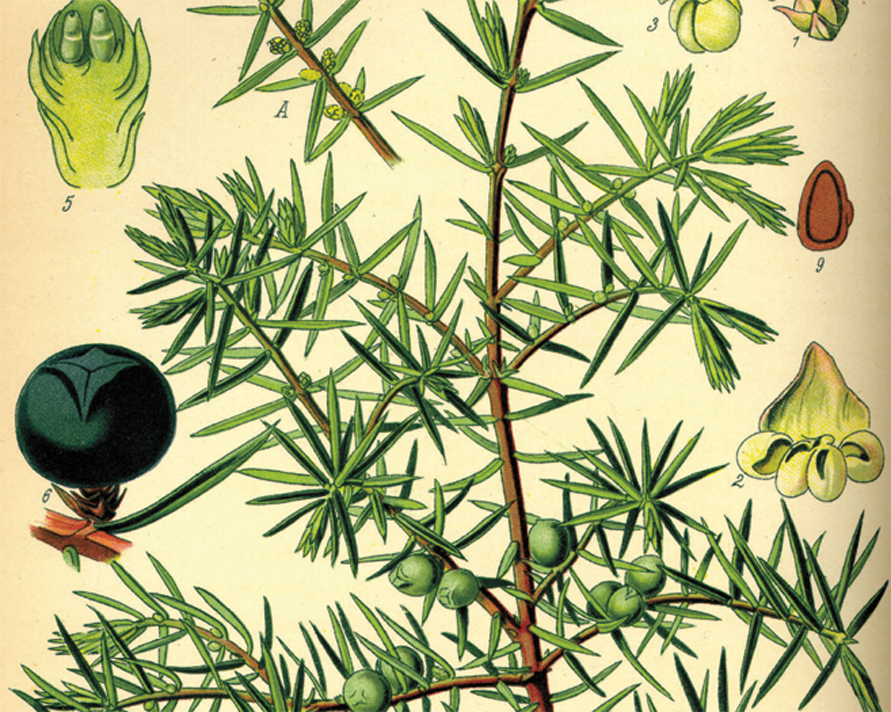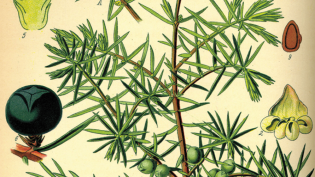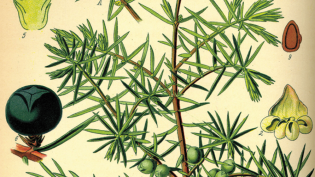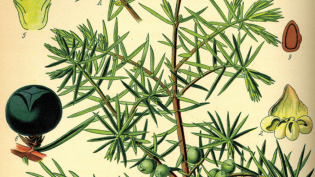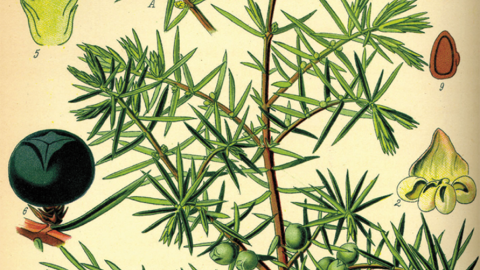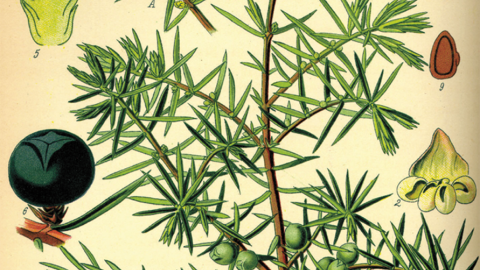In the Garden: Jumping Juniper!
If you frequent the cocktail scene you are likely aware that when gin is distilled it is flavored with juniper berries and other herbs and aromatics. The Bombay Sapphire label, for example, has an artist’s rendering of the 10 botanicals used in their distillation of gin. Among them: grains of paradise, cubek berries, cassia bark, almond, licorice, iris root, angelica, coriander and lemon peel. The dominant aromatic flavoring, however, comes from the juniper berry, and is indeed a legal requirement if the distillation is to be labeled “gin.”
If, on the other hand, you frequent botanical gardens or nature trails you are likely aware that the ubiquitous Eastern red cedar that dots Kentuckiana’s landscape is actually a juniper. Juniperus virginiana, our scraggily red cedar that thrives in shallow soils, can also provide you with a steady supply of juniper berries for the kitchen.
The culinary use of juniper berries has gone mainstream in the last few years. Perhaps that’s because game meats are more widely available and juniper berries mellow the flavor of gamey meats when cooked together. But, even more so, the juniper berry is getting renewed attention because the way we used to eat might just prove to be what we need to return to in order to improve our collective physical and mental health.
Juniper berries have long been used in traditional American Indian food preparation and are showing up on the menus of Chef Sean Sherman, who is an Ogallala Lakota from Pine Ridge, South Dakota. Known as the Sioux Chef, Sherman and fellow American Indian chefs Brian Yazzie (Navajo) and Tashia Hart (Anishinaabe) are focused on culturally relevant foods that are indigenous to the native people of the Central Plains. Their catering company (The Sioux Chef) and their food truck (the Tatanka Truck) serve the Minneapolis/St. Paul, Minnesota, area.
Juniper berries can be foraged from your own back yard or purchased at specialty food shops like Penzey's Spices. They release their earthy, peppery, turpentine aromatics when crushed slightly before adding to the pot! Here are a few recipes I have tried and enjoyed, from Deborah Madison’s The Savory Way (1990).


